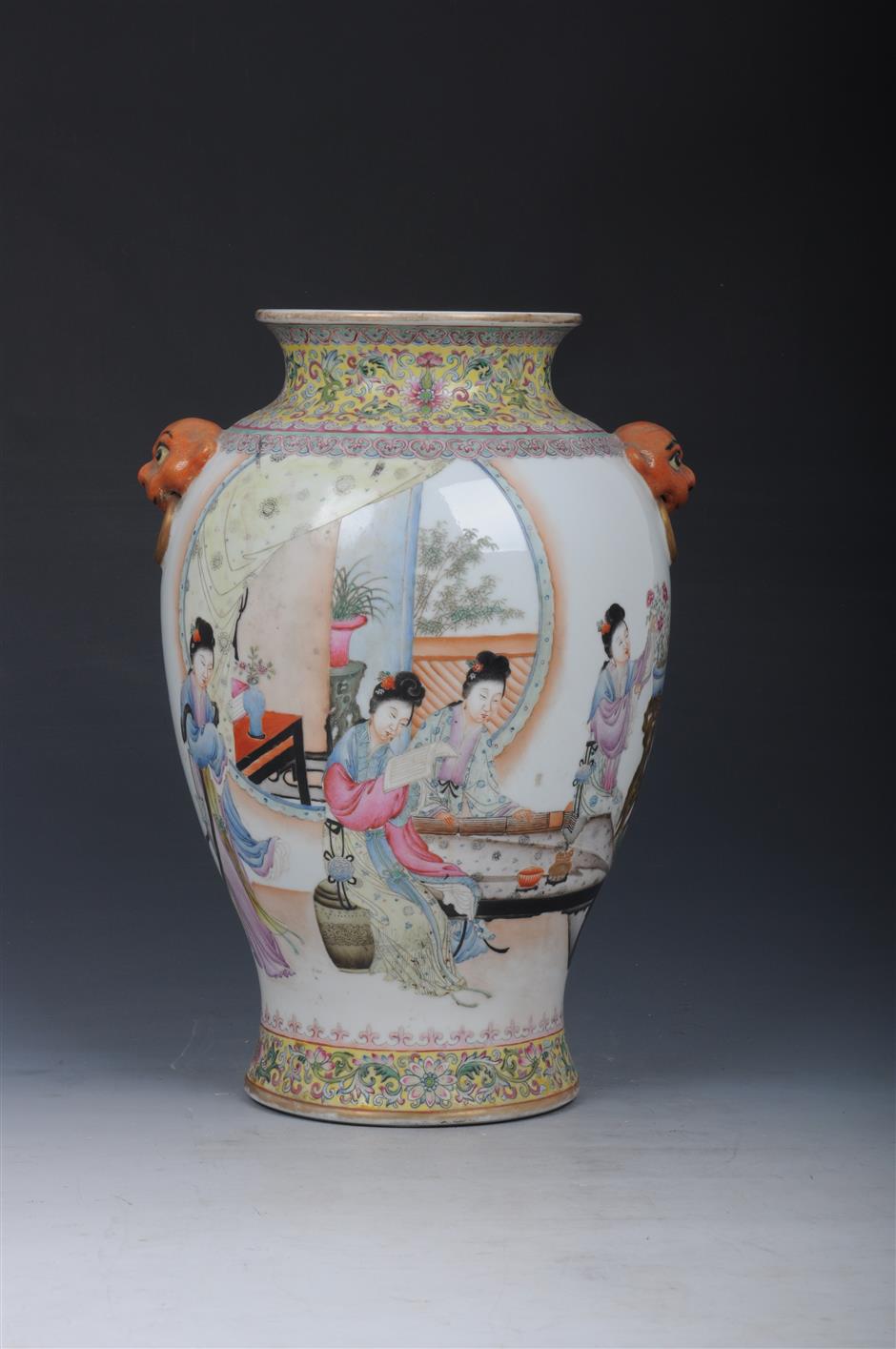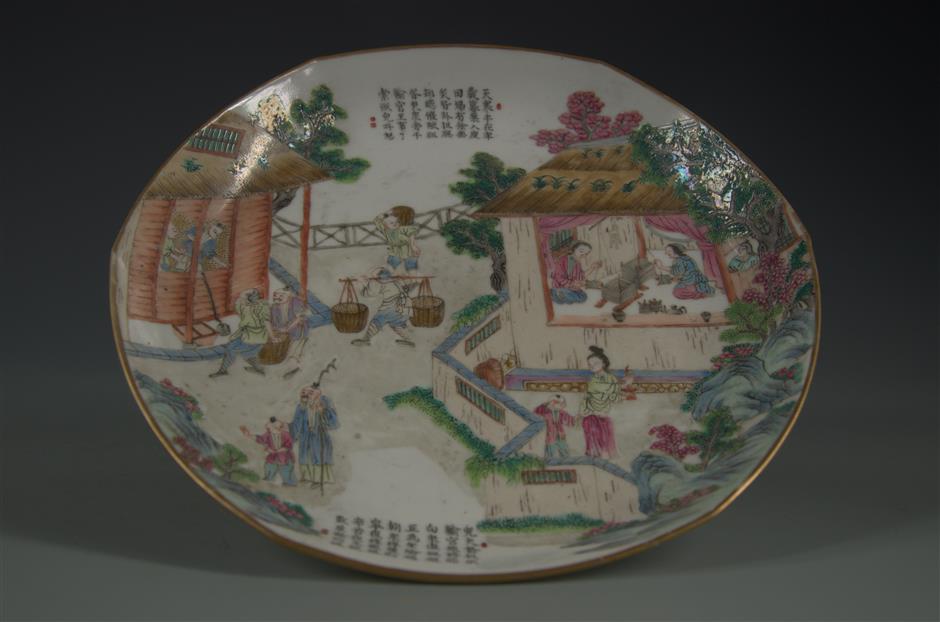Beyond beauty: Porcelain exhibition delves into the lives of ancient Chinese women

A porcelain vase with patterns of women reading books and playing the instrument
In celebration of International Women's Day, a rare exhibition featuring 80 porcelain artworks kicked off at the West Lake Gallery on March 8 and will run through May 7. The partnership with two museums has brought together a collection of porcelain pieces that display the lives of ancient Chinese women through art.
Visitors to the exhibition, divided into three segments, can have a well-rounded picture of ancient Chinese women and discover the changes in social thinking through the display cases. The exhibition showcases ceramic screens, vases and bowls with images of female immortals, historical women and ordinary women from ancient times.
The first section mainly showcases the porcelains with themes of female immortals, including Chang'e (嫦娥), Luo Shen (洛神) and He Xiangu (何仙姑). These patterns encapsulate people's relentless pursuit of beauty. Chang'e stories are well-known Chinese folklore. According to myth, she flew upwards toward the heavens, choosing the moon as her residence. In ancient times, Chang'e stood for the moon, and people worshipped her as the Goddess of the Moon. The exhibition shows ceramic screens on loan from the Jiangxi Province Museum, which depicts Chang'e standing on auspicious clouds, reflecting ancient people's imagery of powerful, beautiful women.
Luo Shen, the goddess of the Luohe River, is traditionally depicted with her ribbons and robe blowing in the wind or floating in the air. Usually, she holds a fan or a lotus flower, and stands on the river's surface or flies in the sky, evidence of which can be seen by examining the vase on loan from Jingdezhen Porcelain Museum.

A bowl with the image of Hua Mulan, a legendary Chinese woman warrior
The second part of the exhibition displays historical women and literature characters patterned on porcelains, which manifest ancient people's praise for brave heroines. Hua Mulan, the legendary Chinese woman warrior, disguised herself as a man to go to war in place of her elderly father. She fought for 12 years and gained high merit, but she refused any reward and retired to her hometown instead. For thousands of years, she has been eulogized in literature and artistic works, and porcelain artworks are no exception. The exhibition showcases a colorful bowl that depicts her returning home in victory.
The women appearing in the last section are ordinary women living in ancient times. Through these exhibits, visitors can get a glimpse of the constraints on women's spirituality and emotions under the male-dominated norm of ancient society. When women got married in ancient China, they were encouraged to give birth as early as possible, and porcelains with patterns of infants and mothers are common, as these works showcase.

A porcelain plate made in the Qing Dynasty
Compared to the vast world of men, women's worlds were full of limitations. Throughout feudal dynasties, women were banned from going to school, and illiterate females were often considered to have better morals. When women were painted on handicrafts, their images were often set in bedrooms or gardens. Ancient Chinese women were often confined to their homes and had no social lives because the feudal society held that women should not have contact with the outside world and should devote themselves to their husbands and children. Women were a kind of decoration in men's houses, just like bonsais, stones and pavilions. They belonged to their husbands or fathers and were enclosed in the backyard garden. As the exhibit indicates, women were still not encouraged to go out, but played six-string zithers, drew paintings and embroidered in the garden.
Beginning in the Qing Dynasty (1644-1911), open-minded families allowed their daughters and wives to study literature, calligraphy and painting, which encouraged them to explore self-awareness. The vase fired in the late Qing Dynasty is painted with women reading, reflecting social changes throughout dynasties.
The exhibition displays artworks loaned from Jiangxi Province Museum, Jingdezhen Porcelain Museum, and other institutions, showcasing an array of porcelain works and one woman's life and influence through history.

A porcelain vase made in the Qing Dynasty
Exhibition info:
Date: Through May 7, closed on Mondays
Venue: West Lake Gallery
Address: 25 Gushan Rd
孤山路25号
















